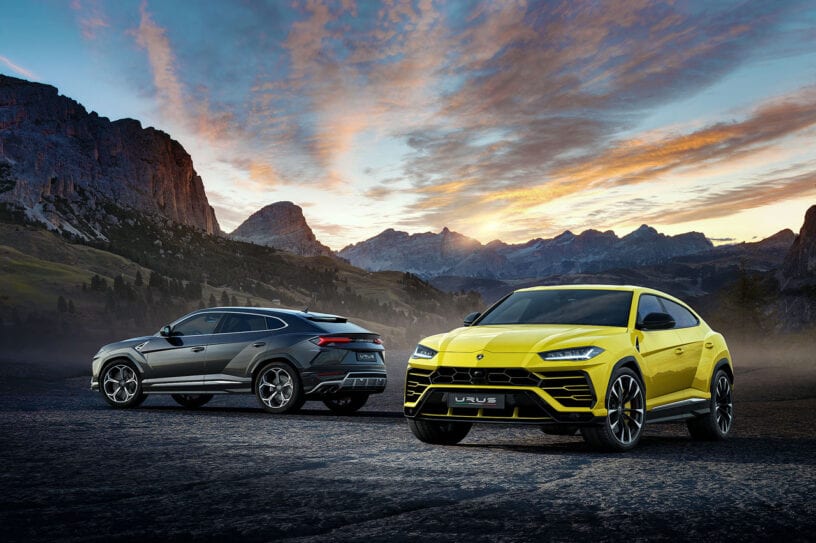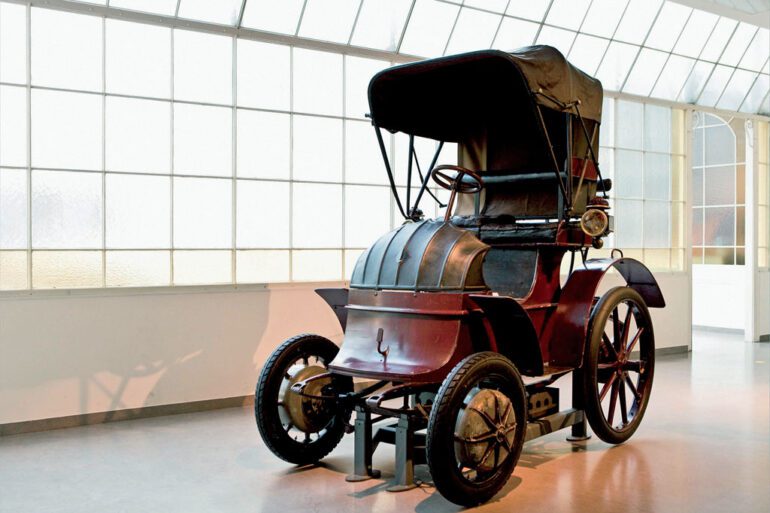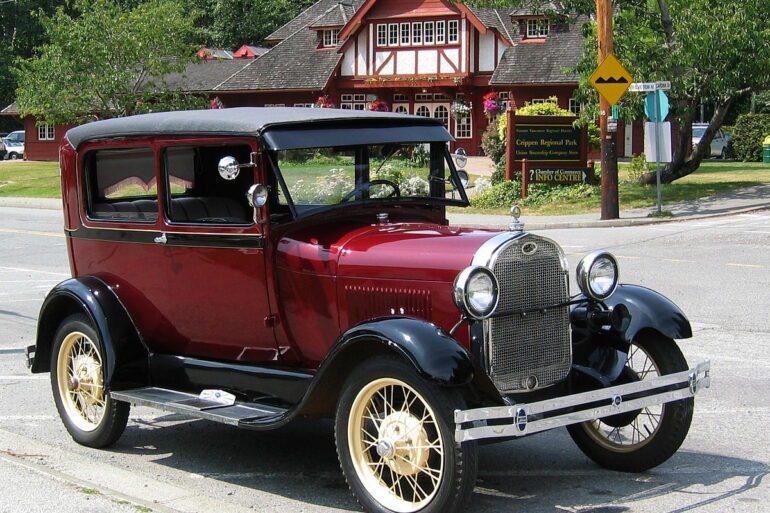Forgotten Supercars of the 2000s
Updated August 2023 by Eduardo Zepeda

You've probably never heard of these rare supercars from the 2000s
About Our Selections
The 2000s brought us a plethora of high-performance supercars that pushed the boundaries of engineering and design.
However, numerous other supercars have faded into obscurity amidst names like the Bugatti Veyron and Ferrari Enzo. In this blog post, we will explore some of the overlooked supercars from the 2000s.
These vehicles possessed capabilities and had the potential to become exceptional supercars. However, their critically acclaimed counterparts ultimately stole the show and overshadowed them.
Join us as we delve into the archives to unearth the unsung heroes of the automotive world, rekindling the flames of nostalgia and celebrating the forgotten gems that once ruled the road.
2001 Mitsuoka Orochi
The mythological snake
Why We Picked It:
Mitsuoka Motor is a Japanese automaker from the 1990s. The Mitsuoka Orochi takes its name from Japanese mythology. It refers to Yamata-no-Orochi, a giant eight-headed serpent with eight tails spreading through eight valleys and hills.
The Matsuoka Orochi sports an organic design with double headlights reminiscent of the eyes of a snake, a large central air intake, a hood with air vents that look like reptile skin scales, dual taillights, and a rear wing split in two.
Built on the platform of the Honda NSX, the Mitsuoka Orochi featured a mid-mounted all-natural 3.3-liter V6 engine developing 233 horsepower, a five-speed automatic gearbox, and rear-wheel drive that allowed it to go from 0 to 60 mph in 6 seconds.
A supercharged version of the same engine, generating around 350 hp, was also available.
Specifications:
Price: $56,000-$78,000
Engine: 3.3L V6
Power: 233 hp
Torque: 241 lb-ft
Transmission: 5-Speed Automatic
Curb Weight: 3,480 lbs
Highlights:
Mitsuoka designed the Orochi with a strong Japanese aesthetic, drawing inspiration from traditional Japanese art and culture.
The Mitsuoka Orochi was a relatively rare car. Only 667 were produced over its 7-year production run.
Learn More:
2007 Caparo T1
An F1 car for the road
Why We Picked It:
The Caparo T1 is a British mid-engine, rear-wheel drive supercar from Caparo Vehicle Technologies (formerly Freesteam), which developed the T1. This insane automobile aimed to be as fast as a Formula 1 car but suitable for public roads. The engine was a 3.5-liter naturally aspirated V8 producing 575 horsepower.
Caparo developed the engine with an aluminum block and internal components from the IndyCar. They claimed the engine could reach 10,500 rpm and was reliable up to 12,000 rpm, redlining at 17,000.
It was a proper competition vehicle with insane figures. The T1 could go from 0 to 60mph in 2.5 seconds and from 0 to 100 mph in less than 5 seconds, thanks to a six-speed sequential transmission and a limited-slip differential, reaching a top speed of 199 mph and could generate a force of 4G.
Specifications:
Price: $283,000
Engine: 3.5L V8
Power: 575 hp
Torque: 309 lb-ft
Transmission: 6-Speed Sequential
Curb Weight: 1,482 lbs
Highlights:
The Caparo T1 was the world's first road car to exceed 1000 bhp per tonne.
The Caparo had a top speed exceeding 200mph depending on the adjustable aerodynamic set-up, which will offer enough downforce to corner at more than 3 gs, the same as a Le Mans prototype.
Learn More:
2008 Spyker C12 Zagato
A match made in heaven
Why We Picked It:
The Spyker C12 Zagato is a Dutch supercar with Italian flair, created to celebrate Spyker's presence in Formula 1. The Italian coachbuilding company Zagato, behind many of the most beautiful sports cars of the last century, mostly Lancia and Ferrari models, designed the Spyker.
With its unique Volkswagen 6.0 L W12 engine, the Spyker C12 Zagato accelerates from 0 to 60 mph in less than four seconds with a 186 mph top speed. The engine has a double overhead camshaft (DOHC) and four valves per cylinder, producing 500 hp and 442 lb-ft of torque.
The power is transmitted to the rear axle through a six-speed manual gearbox (optional automatic), with paddle shifters behind the wheel.
The Spyker C12 Zagato weighs 1,480 kilograms, thus achieving a power-to-weight ratio of 2.96 kilograms for every horsepower.
Specifications:
Price: $495,000-$650,000
Engine: 6.0L W12
Power: 500 hp
Torque: 442 lb-ft
Transmission: 6-Speed Manual
Curb Weight: 3,263 lbs
Highlights:
The Spyker C12 Zagato is the product of a collaboration between two iconic brands: Spyker, a Dutch automaker known for its classic sports cars, and Zagato, an Italian design house known for its elegant and stylish coachwork.
It was hand-built with the highest quality materials and craftsmanship, limited to just 24 units.
Learn More:
2006 Ascari A10
2000's supercar killer
Why We Picked It:
To celebrate its first decade in business, Ascari released its third model, the A10. The A10 looks identical to the Ascari KZ1, but using carbon fiber throughout the body, Ascari reduced weight and increased strength. In addition, a new suspension was installed to improve the vehicle's handling and responsiveness.
BMW packed a 5.0-liter V8 engine into this baby, generating 600 horsepower while only weighing 2,822 pounds. Incredible progress has been made compared to a Bugatti Veyron in horsepower per ton. In about 2.8 seconds, the Ascari A10 could reach 60 mph from a standstill.
Production of the Ascari 10 ceased in 2007, with only 50 units built, making it a vehicle with a brief lifespan. However, a lot of people in the automotive industry still revere it. The beauty, speed, and engineering of this automobile inspire awe.
Specifications:
Price: $377,000-$630,000
Engine: 5.8L V8
Power: 625 hp
Torque: 553 lb-ft
Transmission: 6-Speed Sequential
Curb Weight: 2,822 lbs
Highlights:
The Ascari A10 was designed by Lee Noble, also known for creating the Noble M10.
Critics praised the Ascari A10 for its performance, handling, design, and features like its carbon fiber monocoque chassis and sequential manual transmission.
Learn More:
2000 Saleen S7
A true American supercar
Why We Picked It:
The Saleen S7 was the culmination of the long career of Steve Saleen, founder and CEO of the brand, who, since 1983, had been tuning Ford Mustangs.
The S7 is a two-seater, mid-engine coupe with a heavily modified, naturally aspirated 7-liter Windsor V8 small block engine sourced from Ford mated to a six-speed manual transmission that sends the power to the rear wheels.
The S7's output was 550 horsepower and 570 lb-ft of torque, while the twin-turbocharged iterations produced anywhere from 750 to 1,000 horses. All seasoned with a spectacularly designed body where the air intakes are the model's hallmark.
Assembled on a chrome-molybdenum steel chassis using aluminum honeycomb panels, the body was made of carbon fiber to reduce weight from 0 to 60 mph in under three seconds and reach 200 mph.
Specifications:
Price: $650,000-$1,200,000
Engine: 7.0L V8
Power: 550 hp
Torque: 570 lb-ft
Transmission: 6-Speed Manual
Curb Weight: 2,865 lbs
Highlights:
The Saleen S7 was an exceptional car ahead of its time. It was a powerful, lightweight, aerodynamic supercar that could compete with Europe's best.
Built with a carbon fiber body and a lightweight steel and aluminum honeycomb chassis, the S7 was incredibly light for a supercar.
Learn More:
2007 Gumpert Apollo
The German-Greek deity
Why We Picked It:
One of the Greek gods, Apollo, who inspired the name of the Gumpert Apollo Sport, is depicted in mythology as an Olympian athlete. Its almost alien blend of curves and edges gives it a divine air that's impossible to ignore.
Two variations of the 4.2L twin-turbocharged Audi V8 powered the Gumpert Apollo Sport. The Sport is the most famous variant with 650 horsepower and 627 pound-feet of torque since it was more track-focused and had a limited run of 50 cars.
Powered by Porsche's VarioCam variable valve timing technology, the mid-mounted 90° V8 engine features a closed-deck light-metal crankcase with dry sump lubrication, five valves per cylinder, and four overhead camshafts.
A 6-speed sequential transmission is coupled to the engine to power the rear wheels. The Apollo Sport has a top speed of 224 mph and can reach 60 mph in 3.1 seconds.
Specifications:
Price: $400,000-$600,000
Engine: 4.2L Twin-Turbocharged V8
Power: 650 hp
Torque: 627 lb-ft
Transmission: 6-Speed Sequential
Curb Weight: 2,425 lbs
Highlights:
The Apollo was incredibly light for a supercar, built with a carbon fiber body and a lightweight steel and aluminum honeycomb chassis.
Set a lap time of 7:11.57 minutes at the Nürburgring Nordschleife, making it one of the fastest production cars to lap the track.
Learn More:
2006 Lotus Europa S
A very cool flop
Why We Picked It:
The Lotus Europa S, a Grand Tourer (GT) inspired two-seater, mid-engine automobile, aimed to offer Lotus customers a sportscar experience with significantly enhanced touring and cruising capability.
The Europa S promised to deliver drivers with higher levels of practicality and refinement to complement the simplicity of the Elise and Exige models.
The Europa S is very much in the Lotus line. It weighs 995 kg, is equipped with a 200 horsepower 2.0 engine supplied by Opel that can do 0 to 100 in approximately 5.5 seconds, 0 to 160 km/h in about 14, and reaches a top speed of 225 km/h.
While the Lotus Europa S may not have achieved the same acclaim as other models with higher performance, its lightweight design, mid-engine layout, turbocharged power, and agile handling made it appealing as an entry-level sports car.
Specifications:
Price: $50,000–$100,000
Engine: 2.0L Turbocharged Inline-Four
Power: 200 hp
Torque: 194 lb-ft
Transmission: 6-Speed Manual
Curb Weight: 2,194 lbs
Highlights:
The Europa S's mid-engine layout helped achieve a near-perfect weight distribution, enhancing the car's balance and handling precision.
The Europa is made of aluminum and composite materials, which helps keep the weight down. This makes the car more agile and responsive.
Learn More:
2004 Bristol Fighter
A fantastic sports car you've never heard of
Why We Picked It:
The Bristol Fighter is one of the few automobiles in history to prioritize aerodynamic efficiency over all else. The Fighter is a stunning representation of the inherent elegance that arises when function is prioritized before form. The result is 0 to 60 in 3.4 seconds and a 210 mph top speed.
Its massive 8.3-liter V10 Viper power engine, with 525 horsepower and 525 pound-feet of torque, responds with astonishing precision to the driver's throttle input, unlike traditional high-revving or forced-induction units. The power is sent to the rear wheels through a six-speed manual transmission.
The advanced suspension and chassis provide grip and agility comparable to a race car, further adding to the driving experience's appeal. The significance of Fighter's unparalleled visibility and distinctly compact external dimensions is highlighted, especially in narrower, more challenging routes.
Specifications:
Price: $220,000–$350,000
Engine: 8.3L V10
Power: 525 hp
Torque: 525 lb-ft
Transmission: 6-Speed Manual
Curb Weight: 3,252 lbs
Highlights:
Max Boxstrom, a former Formula 1 engineer, focused on luxury, comfort, and performance when designing the vehicle, with a powerful 8.0-liter V10 Viper engine from Chrysler.
The Bristol Fighter was a rare and exclusive car, with only 13 produced, all hand-built.
Learn More:
2009 Wiesmann MF5
Brute beauty
Why We Picked It:
The German coachbuilder Wiesmann started producing this peculiar supercar in 2007, using BMW components and engines in its models. Under the hood lies a 5.0-liter V10 engine borrowed from BMW's M Division.
With 555 horsepower and 384 lb-ft of torque, the MF5 could go from 0 to 60 mph in a blistering 3.9 seconds. Paired with a 7-speed SMG transmission, it delivered lightning-fast gear shifts and a top speed of 192 mph.
But the MF5's lightweight aluminum chassis and superb suspension tuning ensured that every twist and turn of the road was met with poise and agility. The rear-wheel-drive setup provided enthusiasts with a thrilling driving experience.
Visually, the MF5 boasts a timeless design that combines classic curves with modern flair. The long hood, muscular wheel arches, and sweeping lines paid homage to the golden age of sports cars.
Specifications:
Price: $230,000–$380,000
Engine: 5.0L V10
Power: 555 hp
Torque: 501 lb-ft
Transmission: 6-Speed Automatic
Curb Weight: 3,075 lbs
Highlights:
The MF5 was hand-built and designed with a classic roadster look, with a long hood and short rear deck.
Critics praised the MF5 for its brute power and for its driving experience, described as exhilarating and engaging.
Learn More:
2005 TVR Sagaris
The pseudo homologation car
Why We Picked It:
The TVR Sagaris is a heavily modified T350 with numerous cutting-edge aerodynamic aids and an intimidating appearance. The design was consistent with the car's intended purpose: a racing vehicle that meets all applicable safety standards. It's a 'pseudo' homologation special with an unusual Perspex spoiler.
The Sagaris's powerful punch is courtesy of the TVR straight-six engine found in the Tuscan S, which produces 400 horsepower.
A 4.0-second sprint to 60 miles per hour and a 185-mph top speed result from combining this power with the lightweight carbon fiber body and designed chassis.
Electronic driver aids like traction and stability control were notoriously absent in the TVR Sagaris. This makes it a more engaging and satisfying driving experience for seasoned drivers. The Sagaris was a polarizing automobile, yet it left an indelible mark on the industry.
Specifications:
Price: $45,000-$110,000
Engine: 4.0L Inline-Six
Power: 400 hp
Torque: 310 lb-ft
Transmission: 5-Speed Manual
Curb Weight: 2,205 lbs
Highlights:
The TVR Sagaris was designed by Gordon Murray, also known for creating the McLaren F1. Unlike any other vehicle on the road, the car had a distinctive design, with its sharp angles and aggressive stance giving it a menacing look.
TVR Sagaris was produced from 2004 to 2006. Only 211 units were made, making it one of the rarest TVR models.
















